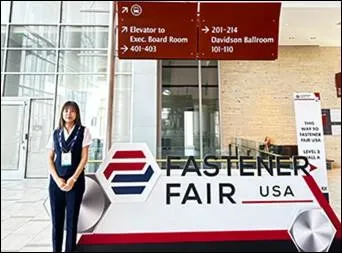Kas . 30, 2024 12:43 Back to list
Exploring Various Types of Bolts and Their Unique Characteristics for Different Applications
Understanding Different Kinds of Bolts
Bolts are essential fasteners used in a wide array of construction, manufacturing, and engineering applications. Understanding the various types of bolts available can greatly enhance a builder or designer's knowledge base, enabling them to select the right type for their project. In this article, we will explore some of the most common types of bolts, their characteristics, and their typical uses.
1. Hex Bolts
Hex bolts are one of the most widely used types of bolts and feature a hexagonal head that allows for easy tightening with a wrench. They are typically used in conjunction with nuts and are prevalent in structural applications where high strength is required. Hex bolts can be found in various materials, including carbon steel, stainless steel, and alloy steel, making them suitable for both indoor and outdoor applications.
2. Carriage Bolts
Carriage bolts are unique in their design, featuring a round head with a square neck that helps prevent the bolt from turning as it is tightened. This makes them ideal for fastening wood to wood or metal to wood, particularly in applications like furniture assembly, deck building, and other structural projects. Carriage bolts are typically finished with a zinc coating to resist rust and corrosion.
3. Lag Bolts
Lag bolts, also known as lag screws, are heavy-duty fasteners with a thick, coarse thread, allowing them to grip wood securely. They are primarily used in applications requiring a strong hold, such as securing beams, ledger boards for decks, and other structural components. Unlike standard screws, lag bolts require a pre-drilled hole for installation and are usually driven in using a wrench.
different kinds of bolts

Shoulder bolts, also called shoulder screws or stripper bolts, have a cylindrical shoulder between the head and the threaded section. This design allows for a smooth surface for rotating mechanisms or freely moving parts. They are commonly used in applications like machinery, automotive assembly, and electrical equipment where precise alignment is critical.
5. Eye Bolts
Eye bolts are used for lifting and securing objects. They feature a loop or eye at the top, allowing a hook or rope to be attached easily. Eye bolts come in various designs, including shoulder eye bolts, which are designed to handle dynamic loads. They are often used in rigging, lifting applications, and in securing items where quick release is necessary.
6. U-Bolts
U-bolts are shaped like the letter U and are primarily used to secure round objects, such as pipes, to a surface. They are made to withstand heavy loads and are commonly used in plumbing, automotive, and construction applications. U-bolts can be found in both stainless steel and galvanized finishes to prevent corrosion in outdoor environments.
7. Platform Bolts
Platform bolts are used in specific applications requiring an elevated surface, such as scaffolding, platforms, and other temporary structures. They are designed to secure framework robustly and ensure stability during use. The head design can vary, but it is often a large, flat surface for easy torque application.
Conclusion
Understanding the different kinds of bolts is crucial for anyone involved in construction or manufacturing. Each type of bolt has its unique design and serves specific purposes that cater to various applications. Whether you're building a deck, assembling furniture, or working on machinery, selecting the right bolt ensures structural integrity, safety, and durability in your projects. By familiarizing yourself with these fasteners, you can make informed decisions that ultimately lead to better project outcomes.
-
The Ubiquitous Reach of DIN934 in Application Realms
NewsMay.16,2025
-
Exploring Different Bolt Types
NewsMay.16,2025
-
Cracking the Code of Sleeve Anchor Mastery
NewsMay.16,2025
-
Clamp Design Principles,Types and Innovations
NewsMay.16,2025
-
Artistry Inspired by the Humble Anchor Bolt
NewsMay.16,2025
-
A Deep Dive into Screw Types
NewsMay.16,2025


